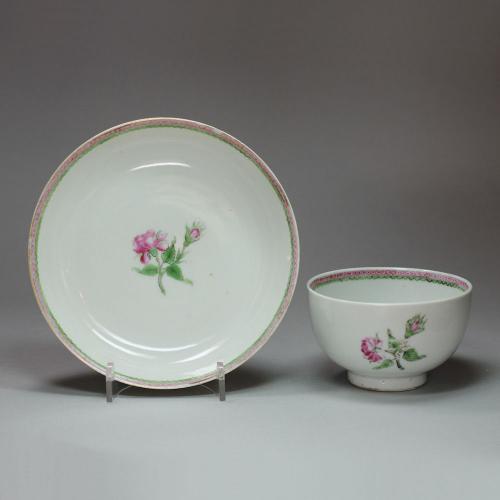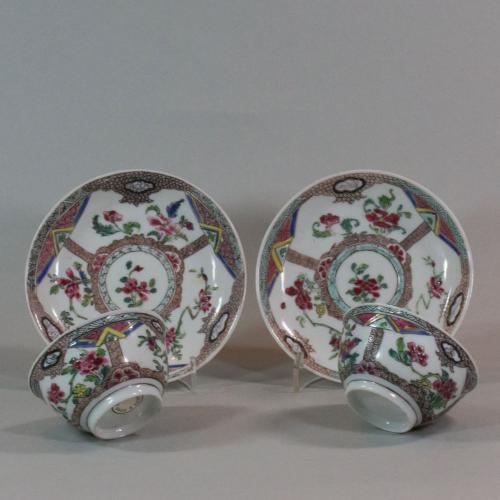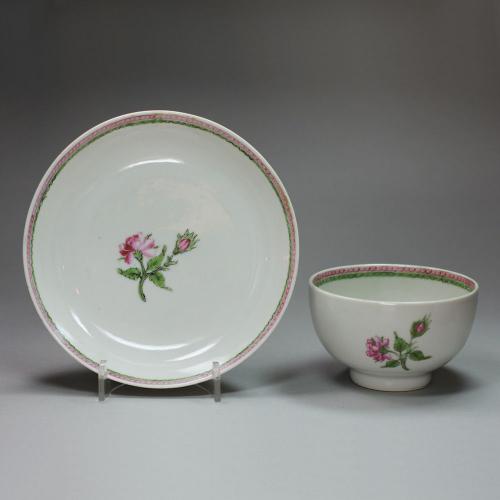
This object is eligible for a Certificate of BADA Provenance
The BADA Standard
- Since 1918, BADA has been the leading association for the antiques and fine art trade
- Members are elected for their knowledge, integrity and quality of stock
- Our clients are protected by BADA’s code of conduct
- Our dealers’ membership is reviewed and renewed annually
- Bada.org is a non-profit site: clients deal directly with members and they pay no hidden fees
Massive Chinese brush pot, Kangxi (1662-1722), with everted rim, decorated to the body with a continuous scene of scholars playing weiqi inside a pavilion, another scholarly group appreciating a painting of bamboo, a third group meeting their attendants in the rocky garden to receive their guiqn cases, while a final group can be seen through a circular window gathered to paint around a table, with a key fret border to the base.
Notes:
The painting of this massive brush pot is of an extremely high standard possibly best exemplified by the small panel of bamboo. Painting bamboo is very difficult. The figures also relate to each other and their activities beautifully A similarly decorated brushpot can be found in the collection of the National Palace Museum, and is illustrated in 故宫博物院藏清代瓷器类选:清顺治康熙朝青花瓷 (Selection of Qing Dynasty Porcelain Collected in the Palace Museum: Blue and White Porcelain from Shunzhi, Kangxi & Qing Dynasties), ed. Chen Runmin, Forbidden City Press (2004) fig.208, p.317. The eighteen scholars on this brush pot most likely refer to the famous 'Eighteen Scholars of Tang', a group brought together to advise the Tang emperor Taizong (r.626-49) before he assumed the imperial seat. The activities they are performing formed the 'four scholarly arts' and represent the accomplishments required of traditional scholar-gentlemen. Individually, these arts had long been associated with literati figures, but the earliest known source combining all four is the Compendium of Calligraphy (Fashu Yaolu) written by Zhang Yanyuan in the 9th century. From ancient times, literati were reported to meet in remote spots to discuss philosophical ideas, paint, drink and pursue the other scholarly arts, with the most famous gathering being the legendary meet at the Orchid Pavilion in the year 353. These meetings, far away from the constraints of court life, came to represent political and artistic freedom during the turbulent years of the Ming-Qing transition. Consequently, such depictions of idealised scholarly self-cultivation became highly popular in Kangxi ceramic design. In addition to the depiction of scholarly pursuits, the scene on the brush pot contains several overt references to the literati aesthetic. Circular windows, for example, of the kind through which the painting group can be seen here, were known as 'moon' windows, and as non-mainstream alternatives to traditional architectural types, became a visual reference to alternative ways of seeing and thus are almost exclusively seen in paintings, prints and ceramic designs with a scholarly theme. The scholarly ideal is also alluded to in the subject matter of the painting which the figures just outside the pavillion are admiring: bamboo was a particularly popular theme within scholar paintings as it was known for its ability to bend and then right itself after being subjected to strong winds and storms, thus adopted as a motif of independence and resilience to external forces.
Dimensions
diameter: 23.3cm.(9 1/8in.), height 16.5cm. (6 1/2in.),Condition report
Two small adjacent chips from which emanate two faint 'hairline' cracks to the body. Faults repaired without spray to very high standard. Please see images for damage and restoration.Stock number
W386The BADA Standard
- Since 1918, BADA has been the leading association for the antiques and fine art trade
- Members are elected for their knowledge, integrity and quality of stock
- Our clients are protected by BADA’s code of conduct
- Our dealers’ membership is reviewed and renewed annually
- Bada.org is a non-profit site: clients deal directly with members and they pay no hidden fees




